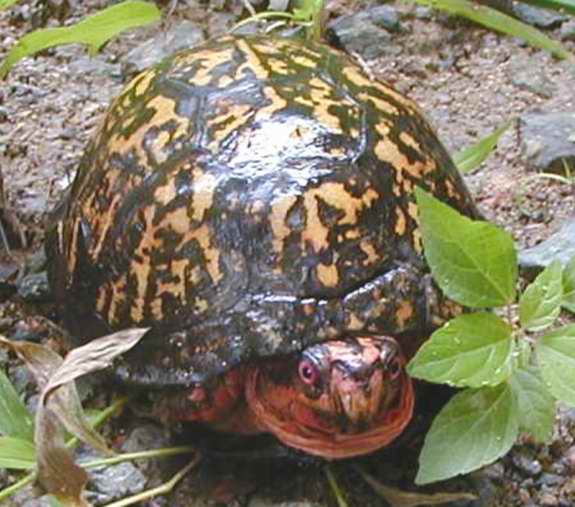|
Common
Name: Eastern Box Turtle Scientific Name: Terrapene carolina (Terrapene is derived from the Algonquin Indian word for turtle, carolina for the region of North America) The most familiar of the turtles in the southern Appalachian Mountains, the box turtle is characterized by a high domed shell or carapace with distinctive black and yellow-orange markings. Males have red eyes and females generally have yellow-brown eyes. Potpourri: The box turtle gets its name from its unique ability to withdraw its entire body within the box-like shell. The lower shell, called the plastron, is hinged for this purpose. When so encased, the shell can withstand a weight 200 times greater than its own. This would be the equivalent of a human supporting two elephants. The box turtle has remarkable longevity. A marked turtle survived 138 years in the wild. This may be attributed to the fact that they mature rapidly, have no natural predators (except humans) and that they generally stay within a relatively small geographical area for their entire lives, often ranging over an area of only a hectare. Box turtles were a staple of the culture of the Algonquin Indians of the Ohio River Valley. They ate box turtle meat, used the shells for ceremonial rattles and buried turtles with their dead. The box turtle is largely depleted in this region as a result. The shell is a casing of bone covered by horny shields. Plates of bone are fused to the ribs and the vertebra. As the ribs are unable to move to support respiration, turtles have developed abdominal muscles to enlarge the chest cavity. There are very few vertebrae, as there is very little to support. Most of the vertebrae are in the neck, to allow retraction. |
